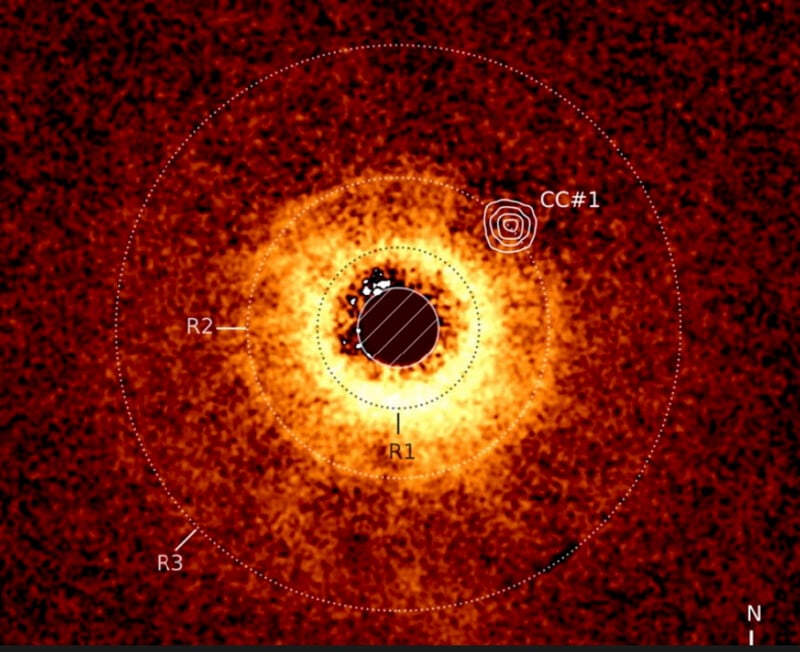Webb Captures Its First Direct Image of an Exoplanet

NASA’s James Webb Space Telescope has captured what scientists believe is its first photograph of an exoplanet. If the findings are confirmed, it would mark the first time Webb discovered a planet through a direct image and the lightest planet ever seen using this imaging technique outside the solar system.
An international team of researchers used Webb’s Mid-Infrared Instrument (MIRI) to image TWA 7, a young nearby star, located a planet-like object, TWA 7 b, with a mass similar to Saturn (about 95 Earths) in its orbit. The team’s incredible research was published this week in Nature.
“Using MIRI’s coronagraph, the researchers carefully suppressed the bright glare of the host star to reveal faint nearby objects. This technique, called high-contrast imaging, enables astronomers to directly detect planets that would otherwise be lost in the overwhelming light from their host star,” NASA explains.
Once the team subtracted residual starlight through imaging processing techniques, a very faint infrared source remained near TWA 7. After extensive work, the team ruled out the possibility that the object is in the solar system and described the chance that it is a background galaxy as “very small.”
“The evidence strongly points to the [infrared] source being a previously undiscovered planet,” NASA says.
The newly discovered infrared source is located in a gap within one of the three dust rings surrounding TWA 7. While ground-based observations have previously observed the star, Webb is uniquely able to block out the starlight to see faint nearby objects.

TWA 7 b’s “brightness, color, distant from the star, and position within the ring are consistent with theoretical predictions for a young, cold, Saturn-mass planet that is expected to be sculpting the surrounding debris disk,” NASA continues.
“Our observations reveal a strong candidate for a planet shaping the structure of the TWA 7 debris disk, and its position is exactly where we expected to find a planet of this mass,” explains Anne-Marie Lagrange, CNRS researcher at the Observatoire de Paris-PSL and Université Grenoble Alpes in France, and lead author of the new research paper.
“This observatory enables us to capture images of planets with masses similar to those in the solar system, which represents an exciting step forward in our understanding of planetary systems, including our own,” adds co-author Mathile Malin from Johns Hopkins University and the Space Telescope Science Institute (STScI) in Baltimore, Maryland.
Image credits: NASA, ESA, CSA, Anne-Marie Lagrange (CNRS, UGA), Mahdi Zamani (ESA/Webb)